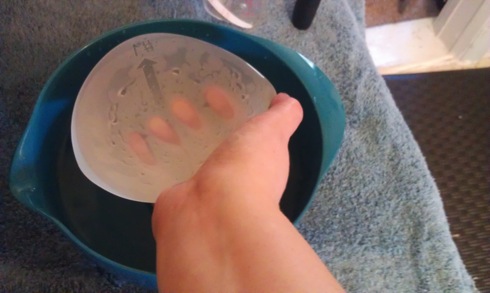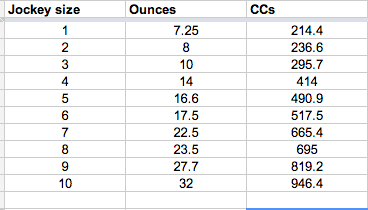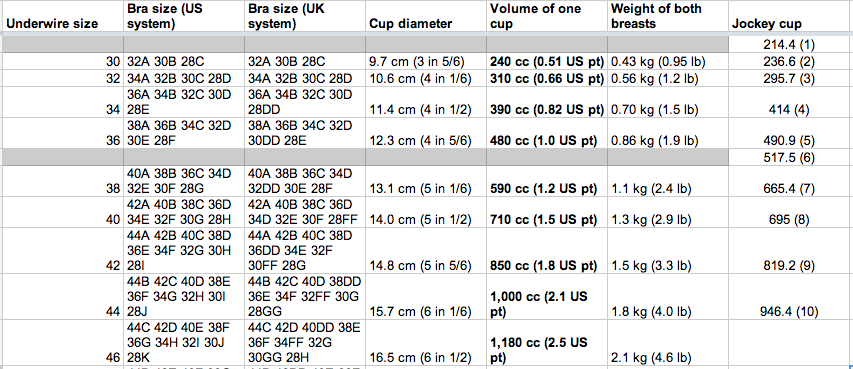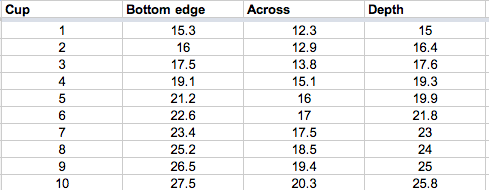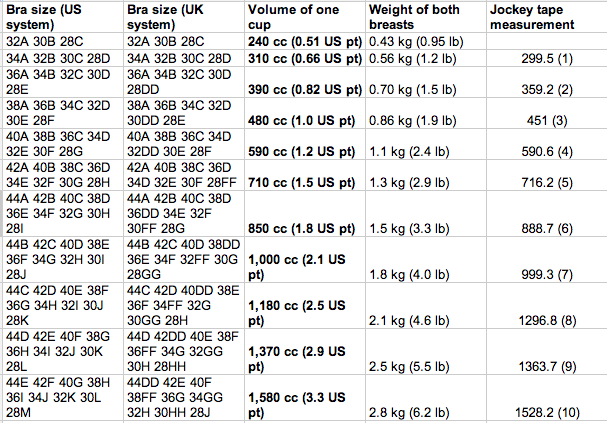Jockey sizing system review
by Tasha - June 6th, 2013I’m a sometimes poster at r/ABraThatFits and like many of the folks there, I was interested when Jockey came out with their new bra cup measuring system. After pondering it for a few days, I realized I might as well order one. Are they really helping women overcome letter stigmas and finding a true fit? Or is their implementation flawed?
The kit costs $19.95 with free shipping, and comes with a $20 credit toward the purchase of their bras. Did you know that you can get your money back on the kit if you call them? I may explore that option later.
The basic premise is interesting. Rather than going with letters, they have cup numbers. This could be a good thing, in order to avoid the huge biases we have towards the current mainstream system. I do, however, take issue with their advertising – specifically the imagery of a measuring tape around a vase full of water. We would not use a measuring tape to measure the volume of the water in the glass, Jockey states. True, but we don’t use just one measurement to get an actual cup size, either. It’s band size minus cup size which gives you the letter. The letters are shorthand indicators for specific cup volumes.
Here is a chart showing some volumes (in cubic centimeters) and the comparable cup sizes (source: Wikipedia). This not a comprehensive data set, but it is the best data I could find for a baseline.
What Jockey has done has made cups that have a specific cubic centimeter cup volume and assigned each volume a number. I also suspect that they have some cups that vary in shape more than volume, and potentially two similar cups may be closer than these volumes.
So let’s find out!
Method
Like any good data lover, I wanted to get all the info. And then it hit me – measure it with water! So I did.
But first… before measuring I wanted to try out the kit unbiased. I measure 33″ underbust and 40/41″ bust. Typically I wear a 34F in UK sizes. According to Jockey, I am a 34 underbust (so far so good) and I fall somewhere in the 7 or 8 cup. Interesting, since I have a 7″ difference with the traditional measurements. The 7 cup had potentially the slightest bit of overspill, and because of how rigid the cups are, it was difficult to tell if I was filling out the 8 cup fully.
On to the stuff you care about!
It came in a little box:
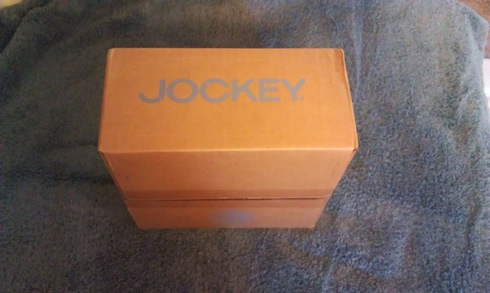
It comes in a little bag, which you can use to wash delicates (like bras) in. I needed another one!

Inside are the cups, measuring tape, and the instructions.

First things first – are they using some kind of system like +4? I measured against your regular measuring tape, and so far, so good:
Of course, as we know they only offer sizes 30 through 42.
My method! I did end up having to change to a bigger bowl part of the way through.

It was actually very difficult to measure this way. The cups have some flex to them, and the sides are not level. I did the best I could, but I know that these results are going to be smaller than reality.
Results (aka what you really care about!)
Keeping in mind how much water was spilling out, these are are undermeasurements. 1 ounce is equal to just under 30 ccs, so there is the potential for a lot of error. If more people run the same test, then we can average results. Also, we can probably do this with straight up just plain measuring. I’ll give it some thought / research.
Table of results:
Side by side with the cup volumes from Wikipedia:
So although the estimates are undersized, there are still quite a few larger cup volumes left out. But what exactly are these volumes? Here is the best I could plot (click to enlarge).
I going to keep saying this until I’m blue in the face, but these are underestimates. I would guess as much as as 1 to 2 cup sizes underestimated. According to this result, the 34F I wear is the size 10 cup, when the 7 and 8 feel better to me. In theory I could be wearing only 34Fs with smaller than average cup volume, but I think it’s clear it’s due to how difficult it was to get accurate measurements.
It does seem to me that Jockey’s system does have several sizes that are much closer together than the standard sizes. You can even notice it visually (7 & 8 cups appear much closer than 8 & 9):

It is about this point that I realize this is off by about two cup sizes and it’s frustrating, so I came up with a new plan.
MORE DATA!
I had an epiphany, and decided to measure the cups with a tape measure instead. I measured along the bottom of edge of the cup, across at the widest point and the depth at the deepest. If you are familiar with it, this is very similar to the measurements that Bratabase asks for.
These cups aren’t the same shape as a bra. The bottom of the cup is not the same curve as an underwire, but as is obvious thus far I am not trying to be that accurate. I don’t know advanced geometry, so I decided that approximation was fine and I would use the formula provided by Wikipedia. Heck, it even says it’s the same measurements you take for Bratabase, and since that’s how I’m measuring I think it’s good enough.
Given that, I was able to calculate approximate volumes (click to enlarge image). This looks far closer, although potentially slightly overestimated.
New final results:
Whew, that makes a lot more sense. Basically, the cup sizes correspond pretty well to the standard. If you go by a 34 inch band, then the numbers match up with the inch difference. So their 7-34 is a 34F, their 6-34 is a 34E and so on.
Live and learn: next time rely on the calculator and leave the water in the sink!
It looks like the smallest size you can get from them bandwise is 30C and the largest is 42E. However, you can get large cup sizes in the middle of the range, up to 30HH.
Have you tried the Jockey system? What were your results compared to your true bra size?


